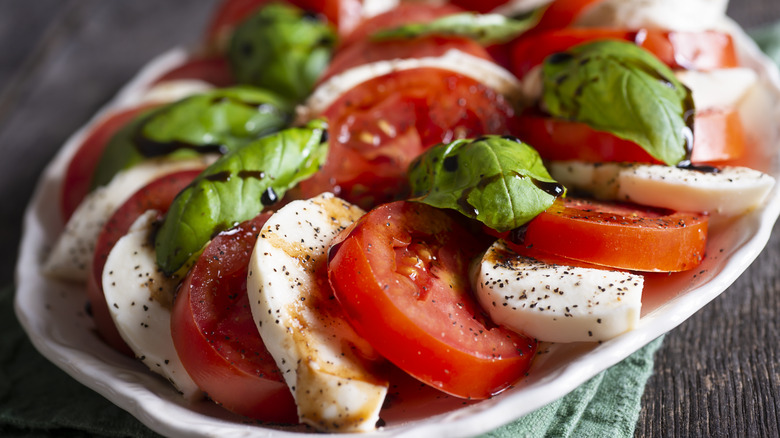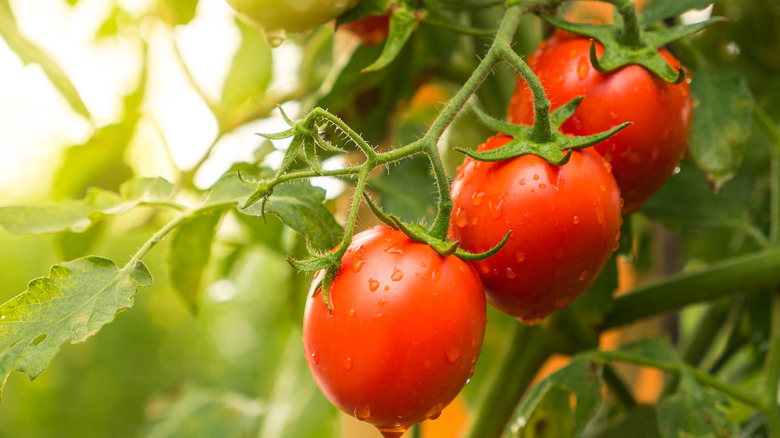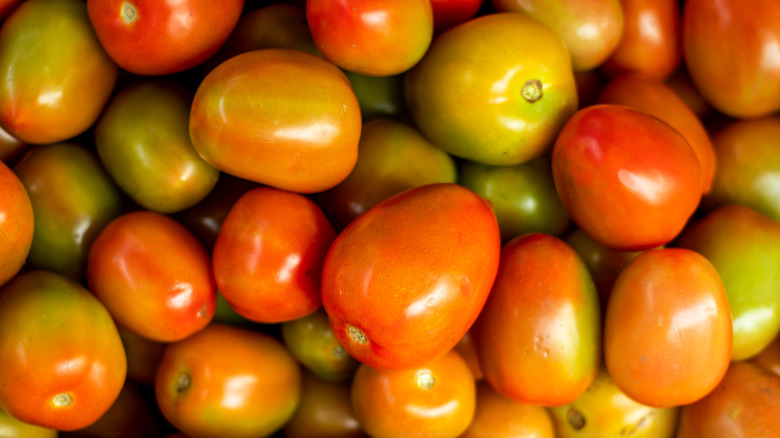When To Order Caprese At An Italian Restaurant, And When To Skip It
In American dining establishments, Caprese salad has become just about as synonymous with Italian cuisine as spaghetti and meatballs. You'd be hard pressed to find an Italian restaurant that doesn't list the salad on its menu. Caprese salad is named for the Italian island of Capri where it was likely created. It is a simple dish emulating the colors of the Italian flag, featuring sliced red tomatoes, fresh mozzarella cheese, and fresh basil leaves often drizzled with olive oil and balsamic.
It's a light and refreshing dish, perfect on warm sunny days. However, Caprese salad has become so popular that many eateries keep the dish on their menus all throughout the year. As much as you may love it, you may want to consider saving the salad for tomato season (June-August) and instead opt for something like the minestrone soup in the dead of winter. Out of season, tomatoes can be bland, dry, and altogether disappointing, affecting your beloved Caprese salad for the worst. A good rule of thumb is if you can't find tomatoes at your local farmer's market, skip the salad. The wait for summer will be worth it.
Caprese salads will be at their peak during tomato season
Sun-ripened, seasonal tomatoes offer a flavor that cannot be rivaled, especially those gorgeous, jewel-toned heirloom varieties that people wait all year for. In a dish as simple as Caprese salad, which contains just a few ingredients, you are able to fully taste everything. So when the tomatoes aren't up to par, you're going to notice. They will potentially be flavorless and dry, making them better suited for roasting with salt and olive oil or making sauce, but not for enjoying on their own. The creamiest mozzarella and greenest basil really won't help.
In general, tomatoes are in season in North America in the summer, but some areas have a longer growing season than others. For example, in sunny California, you may be able to get your hands on ripe, homegrown tomatoes as early as April and as late as November if the weather cooperates. Therefore, you can probably find excellent restaurant Caprese salads for most of the year. Back east, the peak of tomato season often doesn't hit until late July or early August and extends into September, meaning there's a much smaller window of time to enjoy fresh tomatoes while dining out. When in doubt, simply ask the restaurant where the tomatoes are from. If they're local, they're probably in season.
Where do tomatoes come from out of season?
You may be wondering where the tomatoes on your Caprese salad come from when they're not necessarily in season locally. Likely one of two places: a greenhouse or somewhere far, far away. Under proper conditions, tomatoes can and do grow in greenhouses all throughout the year. Bu there's a catch. Since tomatoes need specific levels of temperature, light, and humidity, it can be expensive to grow them in a greenhouse when it's cold and snowy outside since a lot of supplemental energy is required. Those costs are then transferred to restaurants and their customers, so don't be surprised if your January Caprese is suspiciously more expensive than it was last summer.
Instead, restaurants may order their tomatoes from purveyors who get them from places currently experiencing summer weather conditions, like different countries. To account for the long shipping times, produce like tomatoes are often picked before they are ripe. By the time they reach their destination, they may have turned bright red and pretty, but since they were not able to reach their peak of ripeness, they will seriously lack in flavor. With that in mind, if you want your Caprese salads to have the best flavor, you're better off holding out for tomato season. The unparalleled taste will totally be well worth the wait.



